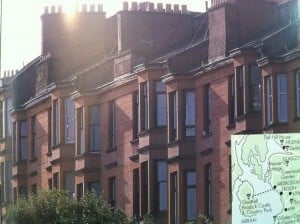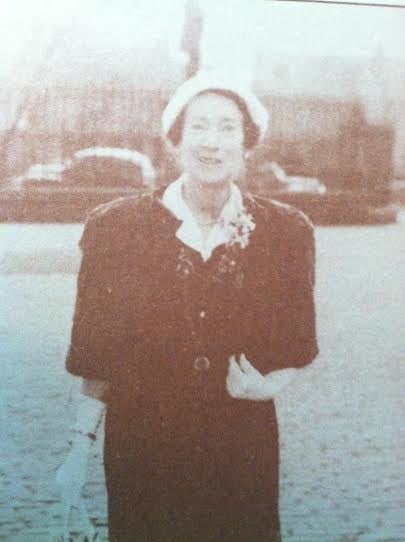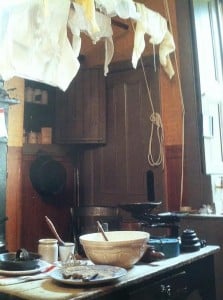Blog Archive
A Tale of Two Tenements

145 Buccleuch Street also known as the Tenement House, a museum run by the National Trust for Scotland, in a row of tenements in Glasgow.
Of course we are not the only Tenement on the block… and last month we brought you news of a Tenement on another continent, Glasgow’s Tenement House at 145 Buccleuch street.
Many aspects of immigration were similar between New York and Glasgow. Both cities witnessed a period of booming industrialization, which filled the city’s tenements with working class populations. Taking a look at the life of Miss Agnes Toward, a resident of Glasgow’s Tenement House museum, gives us a sense of the day-to-day similarities of life between the Lower East Side and Glasgow.
In many ways Miss Toward’s life resembles that of the residents in our tenement at 97 Orchard Street. Agnes Toward was raised as an only child after her sister died in infancy from Tabes Mesenterica, a kind of tuberculosis contracted through infected cow’s milk. Our records suggest that cow’s milk, which was often mixed with contaminants like chalk and ammonia, was also a common cause of death among infants in our own Tenement.
The Toward family was financially comfortable until Agnes’ father died when she was three, revealing the difficulties widowed women faced in maintaining a livable income. Agnes’ mother became a dress maker but records show that she also received help from her church (called a kirk) and from the Glasgow Benevolent Society. Much like our own tenement resident, Natalie Gumpertz, who started a dressmaking business after being abandoned by her husband, Agnes relied on community support as well as her own entrepreneurial skills to survive.
Even with these financial difficulties, Agnes was able to finish school. Upon reaching the end of her studies, she mostly likely chose training as a typist because it would have been relatively affordable. Agnes eventually settled at the shipping firm Prentice, Service & Henderson where she would work until she was in her 70s. She was paid 17 shillings, or 70 pence, a week, which in today’s currency is about a dollar. While her income was modest, Miss Toward also enjoyed paid vacation and was able to take annual holidays, which was as rare in Glasgow as it would have been on the Lower East Side.
At the time it was uncommon for a woman to work her entire life as a typist. Most of Miss Toward’s co-workers would have quit working such a job after they were married. Miss Toward however, never married and was therefore more free to continue to work, but it also required her to be more self-sufficient.
Agnes belonged to a food co-op which would have been a bit more expensive means of buying vegetables, but there were benefits to this kind of purchasing. Agnes would have been able to get a dividend or a ‘divvy’ based on how much she had spent that month. In addition, the co-op offered special services such as milk delivery, funeral arrangements and catering. Miss Towards involvement in the co-op can be seen as similar to the community investment of many of our tenement dwellers. For both populations on a strict budget, the security of having support to pay for the unexpected expenses, such as funerals or weddings, was well worth the effort. Our tenement dwellers might have gotten similar support through political party alignment or religious membership.
Born into the 19th century but raised in the 20th, Miss Toward in many ways represents the challenges that so acutely faced our residents. Miss Toward, like the residents of our tenement, managed to find a place for herself in a city which evolved daily to produce more goods, employ more people, and house more residents. Though Agnes did not emigrate like many of our residents, she died a long way from rural Bonhill, Dunbartonshire where her father was born in 1843.
–Posted by Julia Berick

